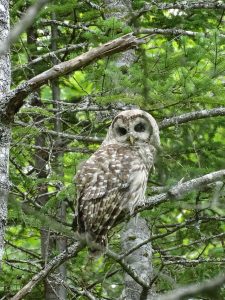It remains difficult to find out who does what at L&F
 From jobs.novascotia.ca
From jobs.novascotia.ca
Date: Jan 27, 2020
Apply By: 2/10/2020
Lands and Forestry
Manager – Ecosystems and Habitats, Permanent, KENTVILLE
Competition # 23687
…As the Manager of Ecosystems and Habitats, you will lead a team of 6 scientists, technicians and specialists in wildlife habitat, modelling, ecology and GIS responsible for policy, research, legislation and management strategies for the stewardship of Nova Scotia’s ecosystems and wildlife habitats. You will provide leadership, scientific and management expertise and coordination on ecosystem and habitat issues in order to meet provincial, national and international objectives.….You have a critical role in the implementation of ecological forestry and landscape level planning in Nova Scotia by collaborating with forestry specialists and contributing to the development of new forest management methods.
…This may be the right opportunity for you if you have a Master of Science in Wildlife Biology, Ecology or a related discipline, plus several years of supervisory experience in a related field. An equivalent combination of education and experience may be considered. While not required, it is considered an asset if you have a Doctoral of Science in Wildlife Biology, Ecology or a related discipline. Read more on jobs.novascotia.ca
It’s hard if not impossible to find out who is currently in the Wildlife Division (“As the Manager of Ecosystems and Habitats, you will lead a team of 6 scientists, technicians and specialists”) which I guess this appointment would effectively head (?).
As with most else in L&F, there are no lists of people in the Wildlife Division, or info on their qualifications and responsibilities on the website, nor are there annual reports on new activities, ongoing activities, new appointments, retirees etc.
It’s difficult to understand why implementation of such reporting is not amongst the recommendations made by consultants who developed the Strategy for Improving Openness, Transparency, Collaboration and Accountability at the Department of Lands and Forestry (June 20, 2019)
A partial list of staff is available at https://novascotia.ca/natr/wildlife/biodiversity/ where it lists:
– Dr. Donna Hurlburt, Wildlife Manager, Biodiversity
– Donald Sam, Biologist, Species at Risk
– Mark Elderkin, Biologist, Species at Risk
– Pamela Mills, Wildlife Technician, Biodiversity
all within the Wildlife Division.
I believe Elderkin has retired. It would be nice to see some acknowledgment somewhere of his and other retirees’ contributions.
For some context, a few extracts from the Strategy for Improving Openness, Transparency, Collaboration and Accountability at the Department of Lands and Forestry (June 20, 2019):
The Lahey Report indicated that there is a lack of trust in the Department and this was a recurrent theme in our research. If one thing is clear as a result of the staff and stakeholder interviews, it is that everyone agrees that in order for the Department to demonstrate openness, transparency, collaboration and accountability, it is critical to bring down barriers to information sharing. As one interviewee stated, the Department should be “an open book.”
“I have concluded that protecting ecosystems and biodiversity should not be balanced against other objectives and values as if they were of equal weight or importance to those objectives or values. Instead, protecting and enhancing ecosystems should be the objective (not the outcome) of how we balance environmental, social, and economic objectives and values in practising forestry in Nova Scotia.” (Page iii Lahey Report)
“Judging by what I heard in this review, there is a general lack of trust and confidence in DNR shared by people who otherwise strongly disagree on forestry practices and other forestry issues. Those opposed to how forestry is currently conducted argue that the Department is beholden to industrial interests, pointing to its failure or refusal to implement the commitments contained in the natural resources strategy and the number of former Bowater employees who are now in senior DNR positions. Those in the forestry business complain of the politicization of the decision-making process, both in making policy that lacks scientific basis and economic realism and in making public opposition (or its absence) the litmus test for approving forestry operations on Crown lands. On both sides, there is sharp criticism for DNR’s science and its tendency to do science in-house with limited resources, without engagement with external academic experts, including through the peer review process.” (Page 54 Lahey Report)
Tip of the hat to S.A. for posting about this position on Annapolis Royal & Area – Environment & Ecology
